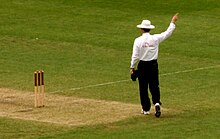TENNIS



- Tennis is a sport usually played between two players (singles) or between two teams of two players each (doubles).
- Each player uses a racket that is strung with cord to strike a hollow rubber ball covered with felt over a net and into the opponent's court.
- The object of the game is to play the ball in such a way that the opponent is not able to play a good return. Tennis is an Olympic sport and is played at all levels of society at all ages.
- The sport can be played by anyone who can hold a racket, including people in wheelchairs.
TENNIS COURT DIMENSIONS
- Tennis is played on a rectangular, flat surface, usually grass, clay, a hardcourt of concrete, and/or asphalt and occasionally carpet (indoor).
- The court is 78 feet (23.77 m) long, and 27 feet (8.23 m) wide for singles matches and 36 ft (10.97 m) for doubles matches.
- Additional clear space around the court is required in order for players to reach overrun balls. A net is stretched across the full width of the court, parallel with the baselines, dividing it into two equal ends.
- The net is 3 feet 6 inches (1.07 m) high at the posts and 3 feet (0.914 m) high in the center.
- The net posts are 3 feet (0.914 m) outside the doubles court on each side or, for a singles net, 3 feet (0.914 m) outside the singles court on each side.
TENNIS RACQUET AND BALLS




















